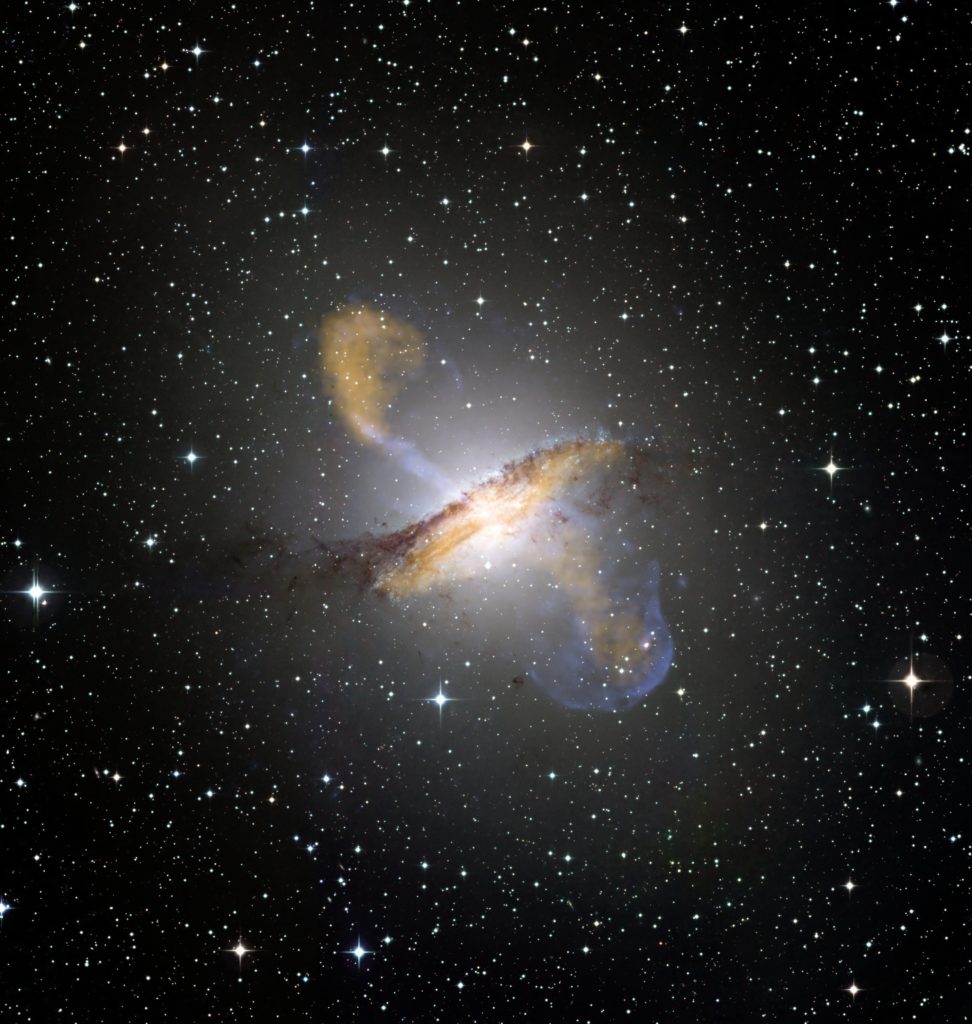Astronomers use telescopes to look into the universe, beyond what our eyes can see. Sometimes they even look at signals that are invisible to humans, like radio signals. Astronomers regularly use large radio dishes to look at radio waves coming from our universe. Many celestial objects and events are detectable with radio dishes. An example of a radio astronomy discovery is the cosmic microwave background, the universe leftovers which contributes to the static on a rabbit ear television.
Radio astronomers working with a radio dish telescope detected something a bit unusual. They were seeing a very fast radio burst, faster and more irregular than any signal in the history of radio astronomy. This radio burst was coming at very short time scales, lasting just a few milliseconds. The signal was irregular, very fast, and strong. This rapid burst has been something of a mystery since it was first discovered.
But, nearly 15 years after the first detection of this strange fast radio burst, the understanding has gotten even weirder. When this was first discovered, the direction of the signal was coming from the heart of our own galaxy, The Milky Way. Because of this, astronomers assumed the signal was the result of some new physics occurring at the center of our galaxy.
This paper has used interferometric observations to directly image the bursts. Interferometry is a technique where the radio signal from the star is passed through narrow holes and mirrors to analyze the resulting patterns from the light. This technique gave more precise data on the colors and intensities of the star light, in this case, a radio wave. This precise data allowed the astronomers to determine where in the universe the signal was coming from. Before, the astronomers could only determine the direction the signal was coming from but they were unable to discern how far away the source was from Earth. Using this technique, the astronomers found the signal is not coming from our galactic center, as it was previously believed. In fact, the astronomers saw that the signal isn’t coming from our galaxy at all. This very fast radio burst signal is coming from a source outside of our own galaxy, and is in a point in the universe where there is nothing, as far as we can tell!
Signals, like radio signals, cannot just arise from empty space; there must be something out there causing this signal. Based upon what we know of astrophysics and the types of objects in our universe that generate radio waves are generally large and high temperature. The size and temperature is dependant on the waveforms, or the precise strength and frequency of the radio signals. This radio signal showed the object is a balmy source, at 1000 times hotter than our sun, and is truly unlike anything seen before in astronomy. The object producing this signal cannot be a star, not a supernovae, not a supernovae remnant, nor a single quasar, nor a neutron star. These objects are just simply incapable of producing a signal of this much strength at this much speed.
The astronomers offer three theories to suggest what the source of the signal could be. The first is the radio signal is multiple objects that are near each other, releasing radio bursts somewhat slowly. Astronomers would detect really fast radio bursts but only because they can’t see that the signals are coming from multiple slower radio bursts sources. The slower radio bursts would be more familiar to astronomers, with signals resembling neutron stars, quasars, or even a supernovae remnant.
Secondly, the authors purpose that perhaps the source is a faint galactic center of a nearby galaxy interacting with a neutron star. Here the astronomers propose there is a small, old, faint galaxy where most of the stars have already come and gone. This would make the galaxy difficult to spot with our telescopes. However, the galactic center of that faint galaxy could out live all the stars and a lone surviving neutron star near the center could interact with the galactic center producing repeated bursts from the neutron star and the galactic center.
Lastly, the astronomers suggest that perhaps it is indeed a single source causing this strange pattern radio signal. This source would be unlike anything the astronomers have ever seen in astronomy. They suggest it would be an obscenely active galactic center with anomalous behavior compared to any of the millions of galaxies we’ve already observed.
Despite the astronomer’s numerous explanations, the authors state that any of the these interpretations can be considered correct at this time. Each proposed source for these interesting fast radio bursts has its own flaws. So far, this is the only signal discovered of this kind, guaranteeing that more curious scientists will use it as a subject of their studies. I am sure we will hear more about this signal in our scientific future.


